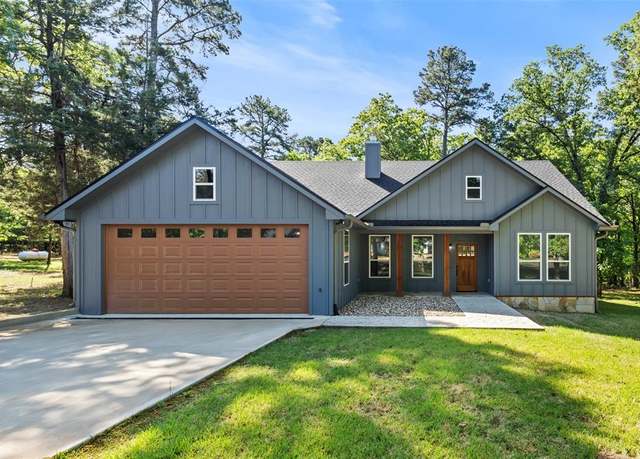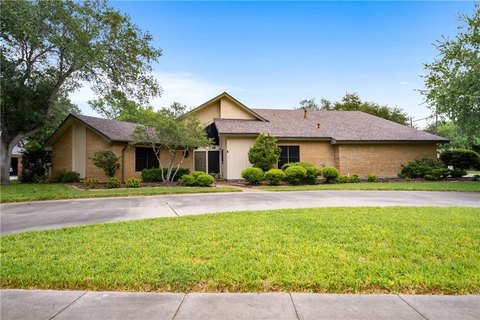Imagine standing at the edge of a sleek infinity pool, your gaze sweeping a sprawling view of the Pacific Ocean. Behind you, the walls of your luxury home are made of floor-to-ceiling glass, inviting the natural light to flood every room. You step inside, and your feet sink into marble floors imported from Italy. The open-plan living space is filled with custom furniture and curated art pieces worldwide, while a dedicated home theatre and spa await in the wings for a relaxing evening. This is more than a home—it’s a statement, a lifestyle, a place where every detail is meticulously crafted to embody comfort, elegance, and status.
The luxury home concept has evolved significantly, from prominent estates and opulent décor to innovative spaces catering to comfort, privacy, and personalization. In this article, we’ll explore the modern luxury home, examine the trends shaping this high-end market, examine the stats behind luxury real estate, and investigate what makes these properties desirable. Whether you’re a prospective buyer, a real estate professional, or simply fascinated by the world of luxury, this journey through the upscale housing market will offer insights into the lifestyle of the wealthy and future design trends.
Defining Luxury Homes: What Makes a Property Truly “Luxury”?
A luxury home goes beyond mere square footage or a high price tag. While these properties are generally among the most expensive in their markets, luxury encompasses more than cost alone. In the U.S., luxury homes are typically defined as those that fall within the top 10% of the market in terms of value (source: Luxury Portfolio International, 2023). This often includes homes priced at $1 million or more, but entry-level luxury can start closer to $4 or $5 million in ultra-competitive markets like New York City or San Francisco.
Beyond price, several factors distinguish luxury homes from standard high-end properties:
- Location: Prime locations in urban centres, exclusive neighbourhoods, or along picturesque coastlines significantly increase a home’s luxury appeal. A Redfin report found that in 2023, homes located in “desirable” zip codes saw a 10-15% premium compared to similar properties in less coveted areas (source: Redfin, 2023).
- Amenities and Features: Luxury homes often include high-end amenities like home theatres, gyms, wine cellars, and advanced smart home systems. According to Zillow, the most desirable features in luxury homes today include infinity pools, chef’s kitchens, and outdoor entertainment spaces, with over 40% of buyers listing these amenities as essential (source: Zillow, 2023).
- Customization and Exclusivity: Many luxury homes are custom-built with unique architectural designs and one-of-a-kind finishes. Buyers in this market are looking for homes that reflect their style, and they often hire top architects and designers to create bespoke spaces.
- Sustainability and Smart Technology: High-end buyers are increasingly interested in eco-friendly features and cutting-edge technology. In a survey by Luxury Portfolio International, 62% of luxury buyers said sustainability features were essential to them, with energy-efficient appliances and solar panels being highly sought after (source: Luxury Portfolio International, 2023).
The Evolution of Luxury Homes: Trends Shaping Today’s Market
The luxury real estate market has seen significant shifts over the past decade. Here are some of the key trends defining luxury homes today.
- Privacy and Security
In an age where privacy is highly valued, luxury homes are being built with extensive privacy features. Gated communities, private driveways, and advanced security systems are common in high-end properties. A report from Statista indicates that 75% of luxury home buyers prioritize privacy as a critical feature, especially those purchasing in high-traffic areas or vacation destinations (Statista, 2023).
Additionally, integrating innovative security technology has become standard in the luxury market. From biometric locks to comprehensive surveillance systems, the latest security technologies provide homeowners with peace of mind and easy control from anywhere in the world.
- Home as a “Resort”
With the rise of remote work and a growing desire for comfort at home, luxury properties now aim to replicate the experience of staying at a five-star resort. High-end homes have private gyms, spas, entertainment rooms, and expansive outdoor spaces. The demand for resort-style amenities skyrocketed during the COVID-19 pandemic, a trend that continues to influence the market. According to Luxury Home Magazine, 53% of buyers seek “self-sustaining properties” where all their recreational and lifestyle needs can be met at home (source: Luxury Home Magazine, 2023).
- Sustainable and Smart Living
Modern luxury homes are increasingly eco-friendly, with features that reduce environmental impact. Solar panels, geothermal heating, energy-efficient lighting, and sustainable materials are now standard in the luxury market. Innovative technology also plays a significant role; systems that allow homeowners to control lighting, temperature, security, and entertainment with a smartphone or voice command are seen as essential by today’s buyers. The National Association of Home Builders found that 84% of luxury home buyers consider eco-friendly features to be “very important” or “essential” (source: NAHB, 2023).
- Multi-Generational Living Spaces
The demand for homes that can accommodate multiple generations is on the rise. Many luxury properties now include guest houses, in-law suites, and separate wings to allow for privacy and independence while maintaining proximity to family. This trend is prevalent in markets like Southern California and Texas, where Realtor.com reported that 30% of luxury listings in 2023 advertised multi-generational living as a critical feature (source: Realtor.com, 2023).
Luxury Home Market Statistics and Insights
The luxury housing market has experienced notable growth, with high-net-worth individuals seeking properties that meet functional and aesthetic needs. Below are some key statistics that offer insights into the current luxury real estate landscape.
- Growth in the Luxury Market: According to Coldwell Banker Global Luxury, the luxury real estate market saw a 13% increase in average sales price in 2022 compared to the previous year, indicating a robust demand despite economic uncertainties (source: Coldwell Banker Global Luxury, 2023).
- Global Hotspots for Luxury Homes: The U.S. leads the world in luxury real estate markets, with New York, Los Angeles, and Miami topping the list of most desirable cities. Knight Frank’s Wealth Report for 2023 identified Los Angeles as the city with the highest price per square foot for luxury homes, with an average price of around $4,500 per square foot (source: Knight Frank, 2023).
- Increase in Foreign Investment: High-net-worth individuals from countries like China, the United Kingdom, and Canada are significant players in the U.S. luxury market. National Association of Realtors reports that foreign buyers accounted for nearly 7% of luxury home purchases in the U.S. in 2023, drawn to the market for its stability and investment potential (source: National Association of Realtors, 2023).
- Remote Work and Luxury Homes: The shift to remote work has increased demand for properties outside traditional urban centres. Places like Aspen, Colorado, and Napa Valley, California, have seen a surge in luxury real estate prices, with some areas reporting price increases of up to 20% since 2021 as buyers seek homes in picturesque, less densely populated regions (source: Forbes, 2023).
What Draws People to Luxury Homes?
Luxury homes offer more than just a place to live—they represent a lifestyle. Their allure lies in their ability to provide a sense of exclusivity, comfort, and personal expression.
- A Status Symbol: Owning a luxury home signifies wealth and success. For many buyers, these properties symbolize the culmination of years of hard work and achievement.
- Personalized Spaces: Many high-end buyers are attracted to the ability to customize their homes to suit their unique tastes and needs. This could mean anything from a bespoke art studio to a temperature-controlled wine cellar.
- Privacy and Security: High-net-worth individuals often prioritize privacy. Luxury homes typically offer more land, better security, and features like gated entries and private beaches to ensure a secluded, secure environment.
- Lifestyle and Comfort: With features like home theatres, gyms, and gourmet kitchens, luxury homes allow residents to enjoy all their favourite activities without leaving the property. This convenience is especially valuable to those who work from home or have a demanding schedule.
The Future of Luxury Homes: Innovation and Sustainability
The future of luxury homes is looking towards sustainability and technology. With the ongoing effects of climate change, high-end buyers are showing a stronger preference for eco-friendly materials and energy-saving systems. Furthermore, advances in innovative technology will continue to drive the luxury market. From AI-powered home management systems to sustainable building materials, luxury homes are set to become even more efficient and customized to individual needs.
Conclusion: The Timeless Appeal of Luxury Homes
Luxury homes offer a glimpse into a world of comfort, beauty, and innovation. These properties are residences and expressions of the owners’ lifestyles, values, and aspirations. The market for luxury real estate is continuously evolving, driven by advances in technology, shifts in work-life balance, and a growing emphasis on sustainability. As the concept of luxury transforms, so do the homes that embody it, blending luxury with modern functionality and environmental consciousness.
For those who can afford it, owning a luxury home is more than just having a roof over their heads—it’s about curating an experience and making a statement. As the market continues to grow, luxury homes will remain not only symbols of wealth but also beacons of style and innovation in the ever-evolving world of real estate.












 Afrikaans
Afrikaans Shqip
Shqip አማርኛ
አማርኛ العربية
العربية Հայերեն
Հայերեն Azərbaycan dili
Azərbaycan dili Euskara
Euskara Беларуская мова
Беларуская мова বাংলা
বাংলা Bosanski
Bosanski Български
Български Català
Català Cebuano
Cebuano Chichewa
Chichewa 简体中文
简体中文 繁體中文
繁體中文 Corsu
Corsu Hrvatski
Hrvatski Čeština
Čeština Dansk
Dansk Nederlands
Nederlands English
English Esperanto
Esperanto Eesti
Eesti Filipino
Filipino Suomi
Suomi Français
Français Frysk
Frysk Galego
Galego ქართული
ქართული Deutsch
Deutsch Ελληνικά
Ελληνικά ગુજરાતી
ગુજરાતી Kreyol ayisyen
Kreyol ayisyen Harshen Hausa
Harshen Hausa Ōlelo Hawaiʻi
Ōlelo Hawaiʻi עִבְרִית
עִבְרִית हिन्दी
हिन्दी Hmong
Hmong Magyar
Magyar Íslenska
Íslenska Igbo
Igbo Bahasa Indonesia
Bahasa Indonesia Gaeilge
Gaeilge Italiano
Italiano 日本語
日本語 Basa Jawa
Basa Jawa ಕನ್ನಡ
ಕನ್ನಡ Қазақ тілі
Қазақ тілі ភាសាខ្មែរ
ភាសាខ្មែរ 한국어
한국어 كوردی
كوردی Кыргызча
Кыргызча ພາສາລາວ
ພາສາລາວ Latin
Latin Latviešu valoda
Latviešu valoda Lietuvių kalba
Lietuvių kalba Lëtzebuergesch
Lëtzebuergesch Македонски јазик
Македонски јазик Malagasy
Malagasy Bahasa Melayu
Bahasa Melayu മലയാളം
മലയാളം Maltese
Maltese Te Reo Māori
Te Reo Māori मराठी
मराठी Монгол
Монгол ဗမာစာ
ဗမာစာ नेपाली
नेपाली Norsk bokmål
Norsk bokmål پښتو
پښتو فارسی
فارسی Polski
Polski Português
Português ਪੰਜਾਬੀ
ਪੰਜਾਬੀ Română
Română Русский
Русский Samoan
Samoan Gàidhlig
Gàidhlig Српски језик
Српски језик Sesotho
Sesotho Shona
Shona سنڌي
سنڌي සිංහල
සිංහල Slovenčina
Slovenčina Slovenščina
Slovenščina Afsoomaali
Afsoomaali Español
Español Basa Sunda
Basa Sunda Kiswahili
Kiswahili Svenska
Svenska Тоҷикӣ
Тоҷикӣ தமிழ்
தமிழ் తెలుగు
తెలుగు ไทย
ไทย Türkçe
Türkçe Українська
Українська اردو
اردو O‘zbekcha
O‘zbekcha Tiếng Việt
Tiếng Việt Cymraeg
Cymraeg isiXhosa
isiXhosa יידיש
יידיש Yorùbá
Yorùbá Zulu
Zulu